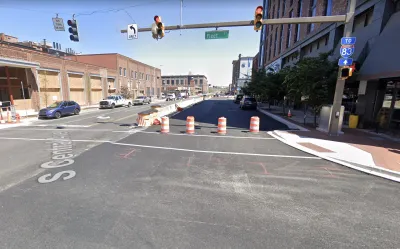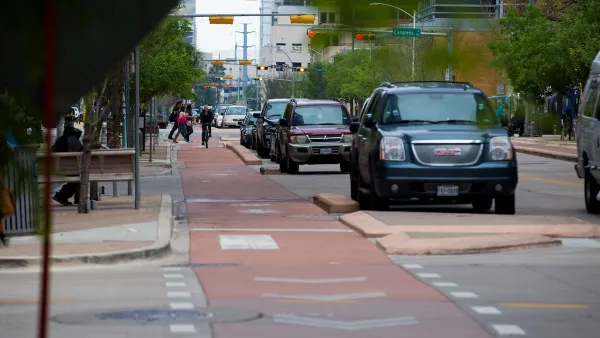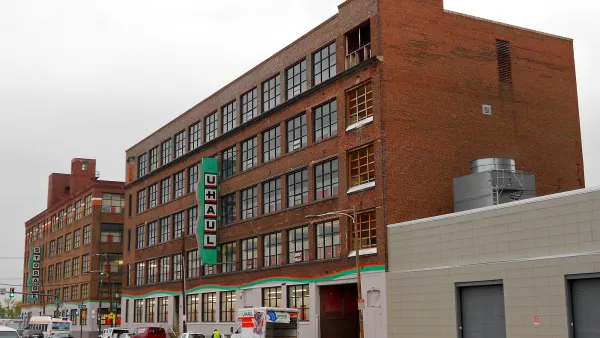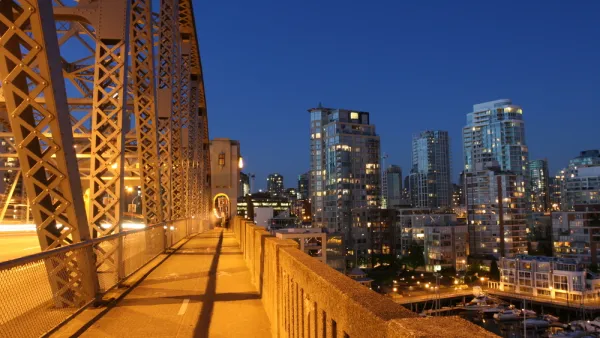Residents and business operators say they weren’t warned about a road diet planned for a major thoroughfare in Baltimore. Planners and advocates say the changes have been a long time coming.

“Work is wrapping up on a $55 million, yearslong upgrade of a major downtown roadway serving Baltimore’s developing waterfront neighborhoods,” reports Lorraine Mirabella in a paywalled article for the Baltimore Sun. “But the revitalization of Central Avenue’s streetscape has surprised some business operators and residents.”
Based on the article’s telling of the story, some local businesses and residents were expecting the project to add vehicle capacity—instead the project is eliminating a vehicle lane in each direction and adding a protected bicycle path. Doug Schmidt, a principal with Workshop Development, is quoted in the article saying the “road diet” was never made public.
“Opponents fear the rebuilt road won’t handle current traffic or heavier use as workers return to offices and as new apartments, offices, hotels and stores open in the corridor. They worry about safety, loss of parking, disruption to businesses that rely on loading areas and increased congestion on neighborhood streets,” writes Mirabella.
Proponents, including bike and complete streets advocates, support the changes. The article notes that the political conflict is indicative of similar struggles in other cities—where increasing awareness of traffic safety and climate change is butting heads with the car-centric planning status quo.
The article documents the planning process that produced the road diet for Central Avenue. The process dates back to 2015, with more direct changes implemented by the city’s adoption of a complete streets ordinance in 2018 and public outreach in November 2021.
FULL STORY: Controversy emerges over changes to Baltimore’s Central Avenue streetscape as it nears completion

National Parks Layoffs Will Cause Communities to Lose Billions
Thousands of essential park workers were laid off this week, just before the busy spring break season.

Retro-silient?: America’s First “Eco-burb,” The Woodlands Turns 50
A master-planned community north of Houston offers lessons on green infrastructure and resilient design, but falls short of its founder’s lofty affordability and walkability goals.

Delivering for America Plan Will Downgrade Mail Service in at Least 49.5 Percent of Zip Codes
Republican and Democrat lawmakers criticize the plan for its disproportionate negative impact on rural communities.

Test News Post 1
This is a summary

Test News Headline 46
Test for the image on the front page.

Balancing Bombs and Butterflies: How the National Guard Protects a Rare Species
The National Guard at Fort Indiantown Gap uses GIS technology and land management strategies to balance military training with conservation efforts, ensuring the survival of the rare eastern regal fritillary butterfly.
Urban Design for Planners 1: Software Tools
This six-course series explores essential urban design concepts using open source software and equips planners with the tools they need to participate fully in the urban design process.
Planning for Universal Design
Learn the tools for implementing Universal Design in planning regulations.
EMC Planning Group, Inc.
Planetizen
Planetizen
Mpact (formerly Rail~Volution)
Great Falls Development Authority, Inc.
HUDs Office of Policy Development and Research
NYU Wagner Graduate School of Public Service





























